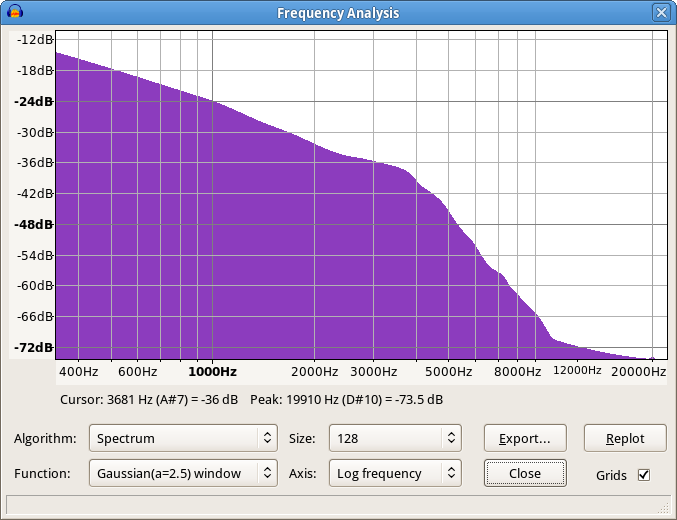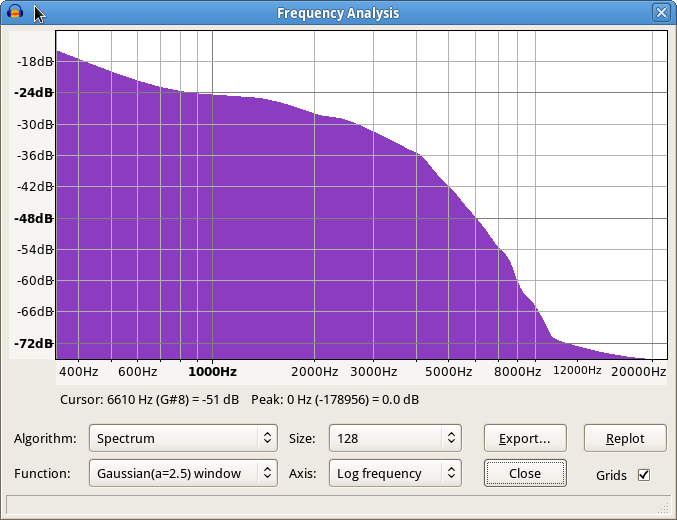The upper graph (left on a really wide browser window) shows the approximate frequency response for AM reception on the Westinghouse H950PN10 AM/FM radio; the other graph shows approximate frequency response for AM reception on the Zenith Royal 76 AM/FM radio. Both are representative samples of portable AM radio frequency response from units made in the 1960s.


Often with AM radios, I try to do some informal testing (I lack test equipment) of frequency response. While audio bandwidth is not an absolute determinant of selectivity, it can be a pretty strong indicator. What especially puzzled me was the selectivity of the Westinghouse H950PN10, previously reviewed, even with the frequency response graph indicated a response similar to that of the Zenith Royal 76, which is not as selective.
A closer look comparing the two graphs indicates a couple of things:
- Either the Zenith is boosting frequencies from 1 to 2 kHz, presumably for more presence and voice intelligibility, or the Westinghouse starts a very gentle rolloff at 1 kHz. I'm inclined to favor the first theory.
- The Westinghouse's sharper rolloff starts at around 3600 Hz, versus 4 kHz for the Zenith. It's not a big difference, but it might affect results in certain situations.
Again, a frequency sweep would be needed for a more definitive answer -- also keeping in mind that US AM stations are required to cut off all audio content about 10 kHz anyway (a dumb rule but it was thought to be a good idea 20 years ago to cut interference -- horse and barn door and all that).
Top graph is the Westinghouse, bottom is the Zenith. Interestingly, casual observation causes me to think that the Westinghouse has the beefier sound, but the Zenith has less distortion and seems more pleasant to listen to.